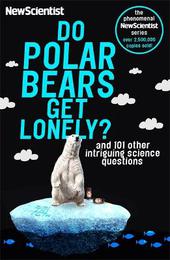
|
Do Polar Bears Get Lonely?: And 101 Other Intriguing Science Questions
Paperback / softback
Main Details
| Title |
Do Polar Bears Get Lonely?: And 101 Other Intriguing Science Questions
|
| Authors and Contributors |
By (author) New Scientist
|
| Physical Properties |
| Format:Paperback / softback | | Pages:240 | | Dimensions(mm): Height 196,Width 131 |
|
| Category/Genre | Popular science |
|---|
| ISBN/Barcode |
9781473651234
|
| Classifications | Dewey:502 |
|---|
| Audience | |
|---|
|
Publishing Details |
| Publisher |
John Murray Press
|
| Imprint |
John Murray Publishers Ltd
|
| Publication Date |
4 July 2016 |
| Publication Country |
United Kingdom
|
Description
From the phenomenal New Scientist series, with over 2,500,000 copies sold DO POLAR BEARS GET LONELY? is the third compilation of readers' answers to the questions in the 'Last Word' column of New Scientist, the world's best-selling science weekly. Following the phenomenal success of DOES ANYTHING EAT WASPS? (2005) and the even more spectacularly successful WHY DON'T PENGUIN'S FEET FREEZE? (2006), DO POLAR BEARS GET LONELY? includes a bumper crop of wise and wonderful answers never-before-seen in book form. Why does garlic make your breath smell? How toothpaste makers get the stripes in toothpaste? Why do we get 'pins and needles'? Why are some people left-handed and other people right-handed? Can insects get fat? Do elephants sneeze? And do fish get thirsty? What causes cells to stick together in the human body rather than simply fall apart? And why are pears pear-shaped (and not apple-shaped)? This all-new and eagerly awaited selection of the best once again presents popular science at its most entertaining and enlightening.
Author Biography
Since the first magazine was published in 1956, New Scientist has established a world-beating reputation for exploring and uncovering the latest developments and discoveries in science and technology, placing them in context and exploring what they mean for the future. Each week through a variety of different channels, including print, online, social media and more, New Scientist reaches over four million highly engaged readers - over a million readers for the print magazine alone.
|